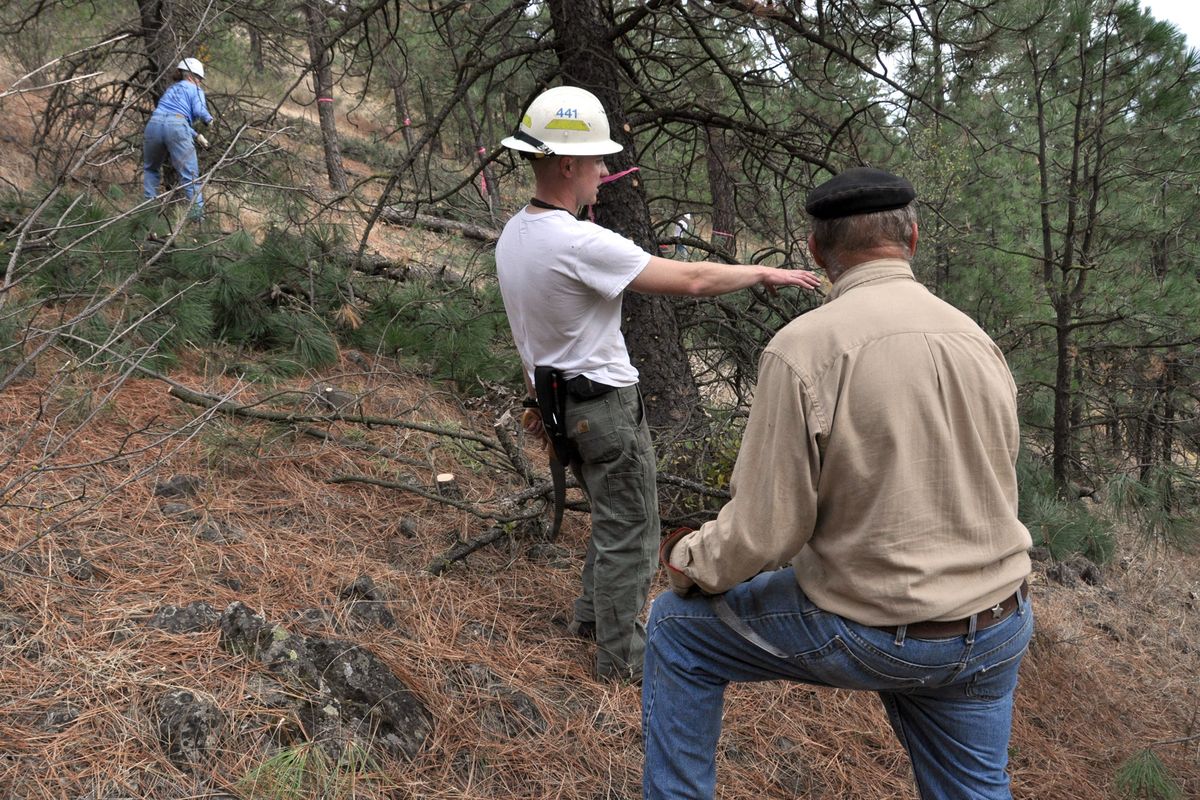Project aims to reduce fire risk on South Hill bluff

Two dozen volunteers thinned ponderosa pine trees and trimmed branches on the South Hill bluff on Sunday in a demonstration project for reducing fire risk.
“The idea is to manage the forest so a fire would be limited to burning grass and brush on the ground rather than blowing up into a crown fire that would destroy lots of trees and put neighborhood homes at risk,” said Erik Sjoquist, Washington State University-Spokane County Extension forester.
The bluff below High Drive to Hangman Creek has a system of trails prized by hikers and mountain bikers.
The popularity of the trails helped spawn a group called Friends of the Bluffs, which is working on several issues related to the trails, including trail maintenance, weed control and fire safety, not to mention dog-dropping containment.
Diana Roberts, a WSU Extension agronomist, has facilitated several meetings over the past year to help the friends group organize and prioritize. The fire risk abatement project rose toward the top of the group’s concerns.
Sjoquist presented the group’s Forest Health and Fire Reduction Plan to Spokane Parks and Urban Forestry officials. The plan’s tree-thinning proposals also would help curb bark beetle infestations and other threats to the stands.
“The city has approved the plan and is thrilled to have volunteers from the community to help,” Roberts said.
The demonstration project covers about an acre down the slope from High Drive just west of Manito Boulevard.
In September, the group walked the area and marked trees they wanted to save based on a forest health formula to stimulate their growth, Sjoquist said. Other trees were targeted for being cut because they were sickly or too closely spaced.
“We had a chain-sawing class from (Spokane Community College) come out and fell the trees,” he said. “In retrospect, we should have had them do more than that.
“We went into this with a goal of not using chain saws to avoid disrupting the quiet,” he said as workers de-limbed the fallen trees with hand saws on Sunday. “But it’s clear that would be too much work and would burn out our volunteers.”
Many of the branches are being scattered to naturally decay and help prevent erosion. Planting native grasses, wildflowers and shrubs also is being considered to reduce erosion and increase aesthetics.
The key, Roberts said, will be to get enough people and volunteers aboard to treat the forest all around the bluff while preserving the aesthetic and recreational values of what she’s calling High Drive Park.
“Before we go further, we want people to see the demonstration project and give us their comments,” she said.